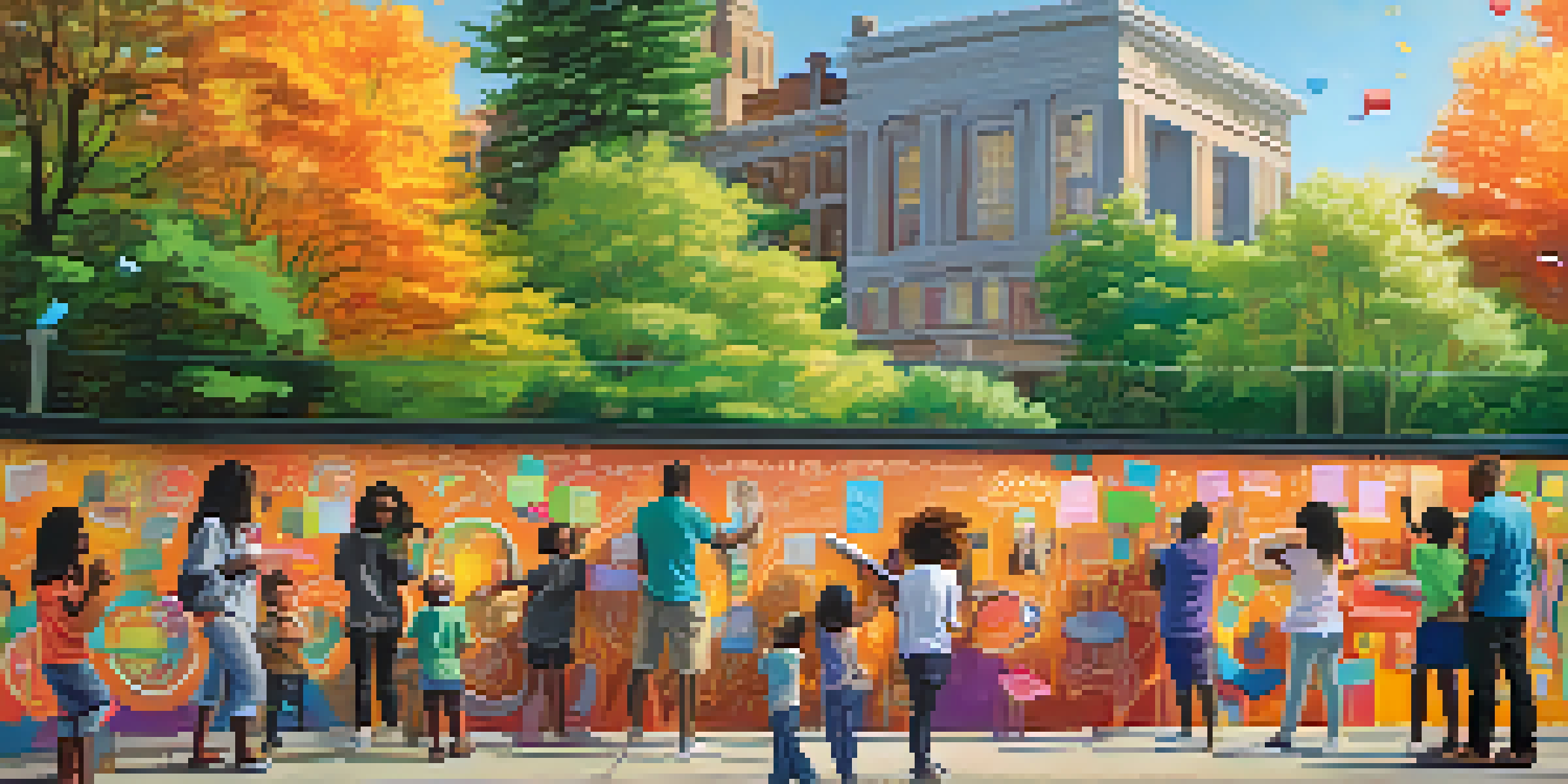Interactive Art: Engaging Audiences in Political Discourse

What is Interactive Art and Its Role in Society?
Interactive art invites viewers to engage directly with the artwork, transforming them from passive observers into active participants. This form of art can take many shapes, from digital installations to community murals, allowing individuals to express their thoughts and feelings creatively. In a society often overwhelmed by information, interactive art serves as a unique platform for dialogue and exploration of complex themes, including politics.
The Power of Engagement in Political Discourse
Engagement is key in political discourse, and interactive art creates a space where people can share their perspectives. By encouraging participation, these artworks can break down barriers and foster understanding among diverse groups. For example, a public installation that requires community input can lead to discussions on local issues, galvanizing support for political action and community engagement.
Interactive Art Engages Communities
Interactive art transforms viewers into active participants, fostering dialogue and exploration of complex societal themes.
Creating Safe Spaces for Expression
Interactive art often provides a safe space for individuals to express their political views without fear of judgment. This can be particularly important in polarized environments where people feel hesitant to share their opinions. By interacting with art that reflects their experiences, viewers can find common ground and engage in meaningful conversations, paving the way for more inclusive political dialogues.
Case Studies: Successful Interactive Art Projects
Several projects worldwide have successfully used interactive art to stimulate political discourse. For instance, the 'Before I Die' wall invites passersby to share their hopes and dreams, prompting discussions about societal challenges. Similarly, the 'The People's Choice' project allows citizens to vote on local issues through an interactive installation, directly linking art with civic engagement.
Safe Spaces for Political Expression
By providing safe spaces, interactive art encourages individuals to share their political views and engage in inclusive discussions.
The Role of Technology in Interactive Art
Technology plays a crucial role in enhancing interactive art, making it more accessible and engaging. Digital installations can incorporate augmented reality, allowing viewers to explore political themes in an immersive way. By leveraging technology, artists can foster deeper connections with their audience, making political discourse not just relevant but also exciting.
Bridging Generational Gaps through Art
Interactive art has the potential to bridge generational divides, inviting people of all ages to participate in political discussions. Younger generations, often more comfortable with technology, can engage with art in ways that resonate with them, while older generations may find new perspectives through these interactions. This cross-generational dialogue can lead to a richer understanding of the political landscape.
Technology Enhances Artistic Engagement
The integration of technology in interactive art makes political themes more accessible and engaging for diverse audiences.
Challenges Facing Interactive Art in Politics
Despite its potential, interactive art in the political realm faces challenges. Funding can be limited, and artists may struggle to find venues willing to host politically charged projects. Additionally, there can be backlash from groups who view such art as divisive, which can stifle creativity and the open exchange of ideas.
The Future of Interactive Art in Political Discourse
Looking ahead, the future of interactive art in political discourse seems promising as more artists and communities embrace this medium. As society continues to grapple with complex issues, interactive art can serve as a catalyst for conversation and action. By fostering engagement and understanding, interactive art not only enriches our cultural landscape but also empowers citizens to take an active role in shaping their world.